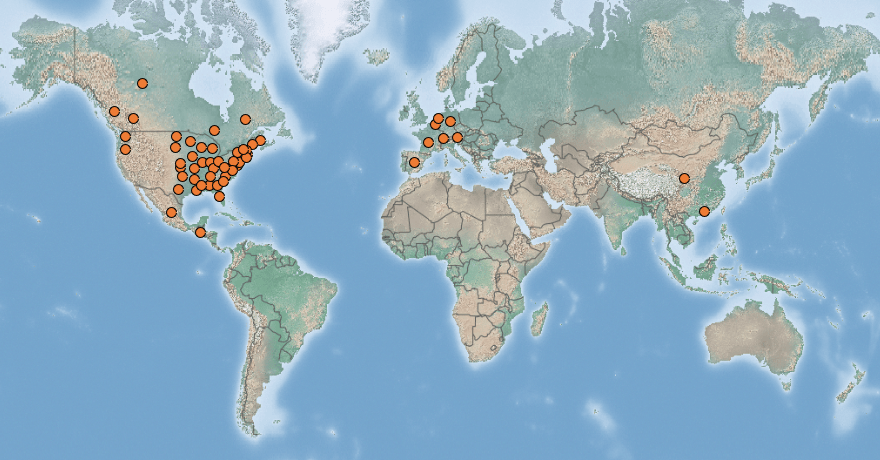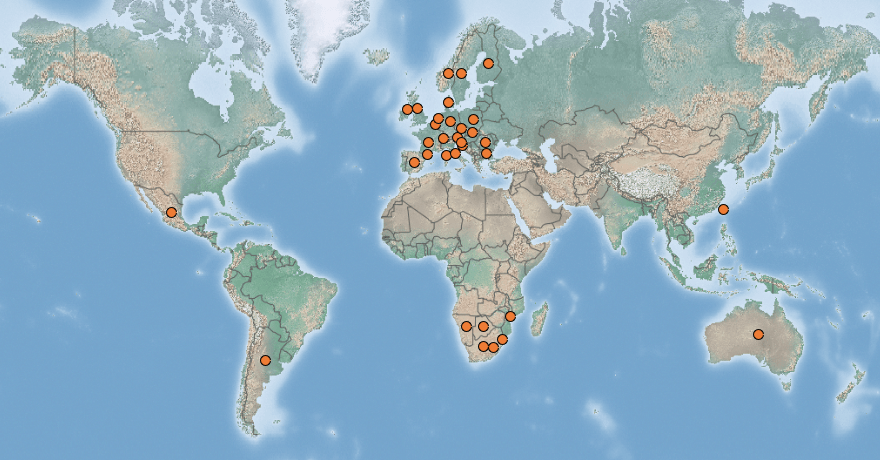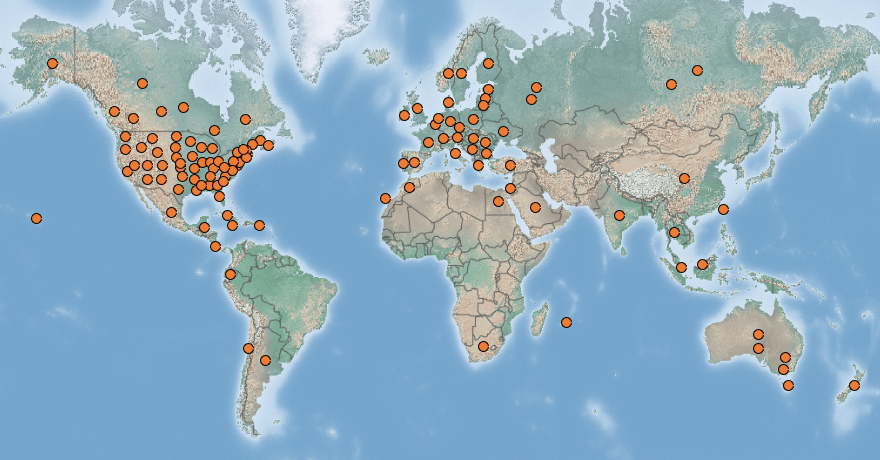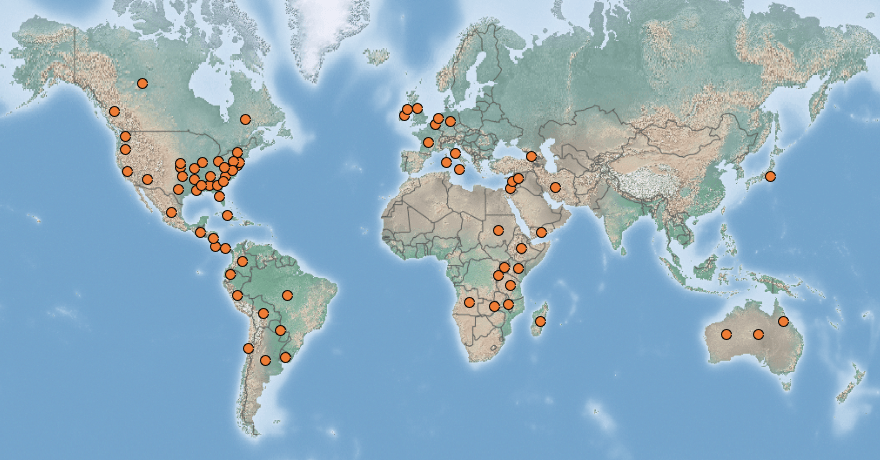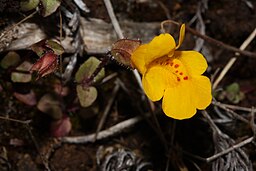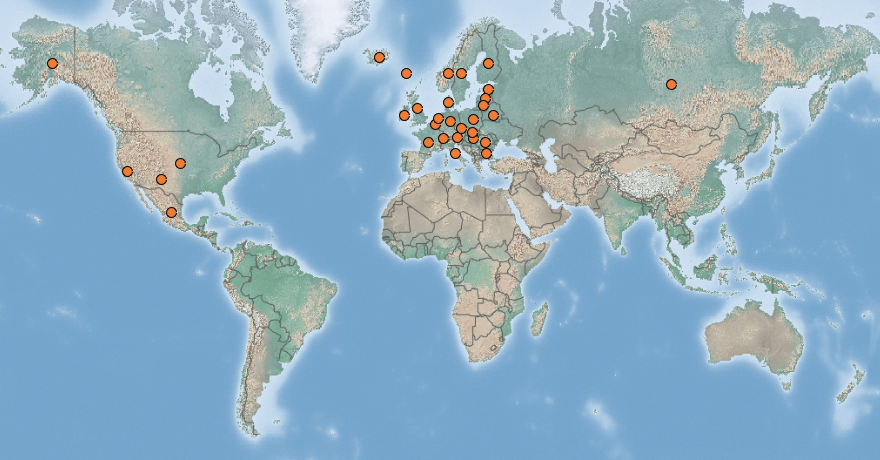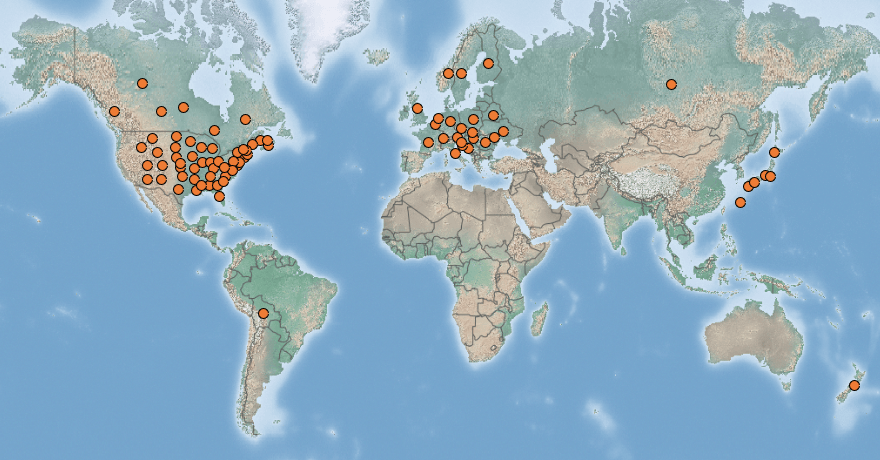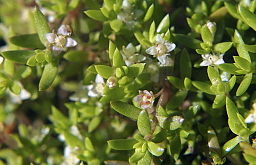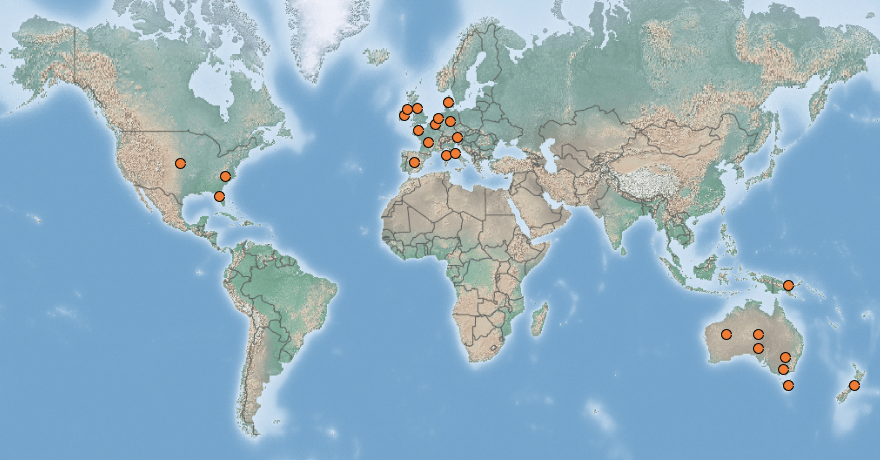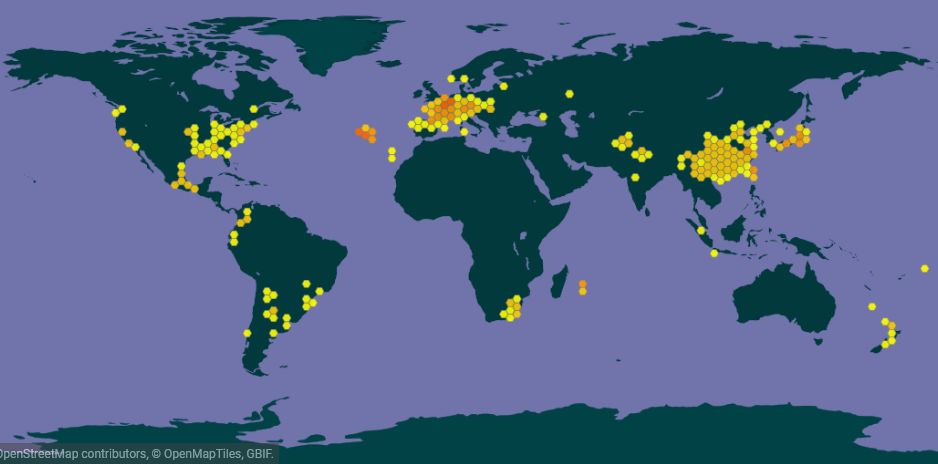 |
Narrow-leaved ragwort |
Status LU: established. 1st record: LU & ITW 1988. |
 |
Schmuelt Kräizkräitchen |
Status Eur.: established. 1st record: DE 1889. |
 |
Séneçon du Cap |
RA: ISEIA: B2, Watch List. Harmonia+: 0,29. |
 |
Schmalblättriges Greiskraut |
Wikipedia:     | Wikispecies: | Wikispecies:  | CABI | CABI |
 |
Bezemkruiskruid |
Back to the list of neophytes |
Brief description
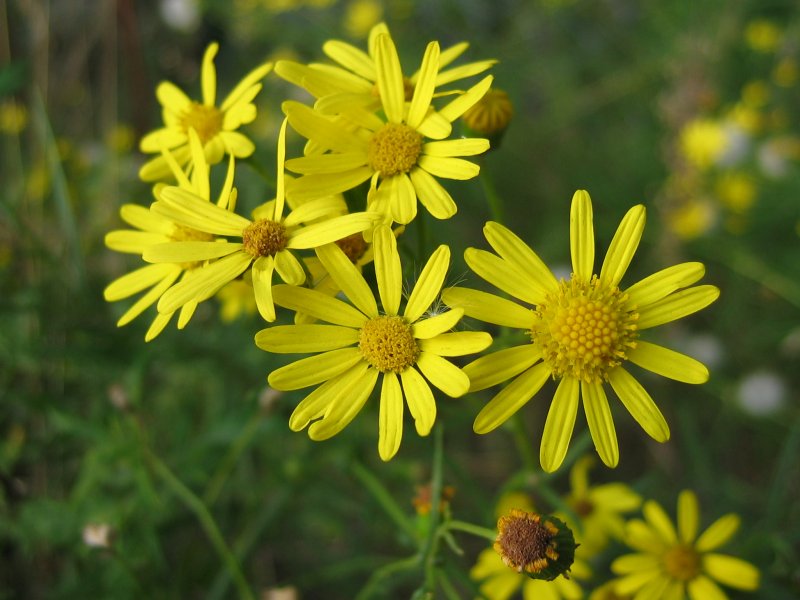
Kristian Peters @ Wikimedia Commons
DC. mainly thrives in ruderal and disturbed areas. It may also be found in rock outcrops, open grasslands and sand dunes. Minute achenes (3 mm) are mainly dispersed by wind, but also by water and animals, travelling long distances.
Senecio inaequidens does not demonstrably pose a threat to indigenous species or plant communities at present in western Europe. The plant is toxic for livestock (Branquart et al. 2010).
As a plant of the southern hemisphere, it tends to flower particularly in autumn (springtime in its region of origin) and it is only the first serious frosts that make its beautiful light-yellow flower heads disappear, carried on stems lined with linear leaves (Reichling 1990: 67).
Status and distribution in Luxembourg
Senecio inaequidens DC. was first observed in Luxembourg in the wild by Ed Melchior on 1988-07-31 on a slag heap in Differdange (Reichling 1990: 67; MNHNL 2000-). This record was published with the following annotations by Léopold Reichling: “A South African species, new to our country. It has become naturalised in some regions of southern and western Europe, closer to home, particularly in Belgium (especially the Liège region) (e.g. Van Rompaey & Delvosalle, 1979, map 1040: Delvosalle & al. 1979 and in the NW of Germany (e. g. Kuhbier, 1977). Given the momentum with which it often invades newly conquered lands, it can be expected to spread to the slag heaps and quarry bottoms of the Mining Basin. As a plant of the southern hemisphere, it tends to flower mainly in the autumn (springtime in its native land) and it is only the first serious frosts that make its beautiful light-yellow flower heads disappear, carried on stems lined with linear leaves with an embracing base” (Reichling 1990: 67; see here for the cited references).
In 2008 and 2009, isolated plants were observed in the northern part of Luxembourg (Esch/Sûre, Harlange). In 2012, only 14 observations were documented in the Recorder-Lux database (MNHNL 2000-). In 2014 a survey of the species along highways increased the number of records (Frankenberg & Gräser 2014). Currently, 164 records are accessible through the MNHNL-mdata portal (MNHNL, iNaturalist & GBIF 2021).
But while the first populations of the plant were documented in industrial areas in the south of Luxembourg, it took the species only a few years to spread to Luxembourg City as well as to the German and Belgian borders, using the motorway network as a dispersal route. A study from 2014 showed that by then the species had populated almost the entire motorway network of Luxembourg (Frankenberg & Gräser 2014).
The species is already widespread in the south of the country, mainly along the main roads, but it is also expanding in the central and northern parts of the country and is increasingly being observed at stations far from any roadside (Krippel et al. 2020: 47).
The species appeared spontaneously in 2020 and 2021 at various locations along the course of the water pipe as well as in August 2021 in the construction site of the new treatment plant of the Syndicat des eaux du barrage d’Esch-sur-Sûre (SEBES) (Wolff & Krippel 2022: 7).
The species continues to expand its range and will probably have negative impacts on biodiversity as soon as it spreads from motorways and roads into grassland, pastures and rock ecosystems.
This species, native to South Africa, is naturalised in southern and western Europe. Common to rare, with strong expansion in the wild. Roadsides, railway ballast, wastelands, slag heaps, quarry screes, lawns. Originally, this species was mainly naturalised in the eastern Mosan area (Vesdre valley and Meuse valley around Liège) and in the surroundings of Calais. It then spread (especially from the 1980s onwards), often proving to be a very invasive weed. It is now found in a large part of the region, where it is still growing (Lambinon & Verloove 2012: 739).
Risk assessment
ISEIA protocol
B2 (3+2+2+3) = Watch List (Ries et al. 2013: 19).
Harmonia+ protocol
Overall risk score 0,29 = (Overall Invasion score 0,76 x Overall Impact score 0,38) (Ries et al. 2020).
0,76


Invasion
0,38


Impact
0,29


Risk
Worldwide distribution
Bibliography
- Branquart, E., S. Vanderhoeven, W. Van Landuyt, F. Van Rossum & F. Verloove, 2010. Harmonia database: Senecio inaequidens DC. Harmonia version 1.2, Belgian Forum on Invasive Species. URL: http://ias.biodiversity.be [accessed on 2019-10-15]
- CABI, 2019. Senecio inaequidens. In: Invasive Species Compendium. Wallingford, UK: CAB International. URL: www.cabi.org/isc [accessed 2020-03-04]
- Colling, G. et L. Reichling, 1996. Notes floristiques 1994-1995. Bull. Soc. Nat. luxemb. 97: 25-38. [PDF 596 KB]
- Colling , G. & Y. Krippel, 2001. Notes floristiques. Observations faites au Luxembourg (1998-1999). Bull. Soc. Nat. luxemb. 101: 33-48. [PDF 331 Kb]
- Frankenberg, T. & P. Gräser, 2014. Vorkommen des Schmalblättrigen Greiskrauts (Senecio inaequidens DC.) in Luxemburg, Erfassung der aktuellen Verbreitung der Art entlang der Autobahnen und Autobahnzubringer. Unveröff. Studie des Büros EFOR-ERSA im Auftrag Nationalmuseums für Naturgeschichte, Oktober 2014. 6 S. + Anhang [PDF-Bericht, PDF-Übersichtskarte].
- Krippel, Y. & G. Colling, 2008. Notes floristiques. Observations faites au Luxembourg (2006-2007). Bull. Soc. Nat. luxemb. 109: 59-76. [PDF 549 KB]
- Krippel, Y. & G. Colling, 2010. Notes floristiques. Observations faites au Luxembourg (2008- 2009). Bull. Soc. Nat. luxemb. 111: 11-32. [PDF 209 KB]
- Krippel, Y. & G. Colling, 2012. Notes floristiques. Observations faites au Luxembourg (2010-2011). Bull. Soc. Nat. luxemb. 113: 67-82. [PDF 579 KB]
- Krippel, Y. & G. Colling, 2014. Notes floristiques. Observations faites au Luxembourg (2012-2013). Bull. Soc. Nat. luxemb. 115: 109-124. [PDF 893 KB]
- Krippel, Y., T. Helminger & G. Colling, 2020. Notes floristiques. Observations faites au Luxembourg (2018-2019). Bulletin Soc. Nat. luxemb. 122 : 29-55. [PDF 132 KB]
- Lambinon J. & F. Verloove, 2012. Nouvelle flore de la Belgique, du grand-duché de Luxembourg, du Nord de la France et des régions voisines. Sixième édition. Avec la collaboration de L. Delvosalle, B. Toussaint, D. Geerinck, I. Hoste, F. Van Rossum, B. Cornier, R. Schumacker, A. Vanderpoorten et H. Vannerom. Jardin botanique national de Belgique, Meise. CXXXIX + 1195 pp. ISBN : 9789072619884.
- MNHNL, 2000-. Senecio inaequidens DC. in Recorder-Lux, database on the natural heritage of the Grand Duchy of Luxembourg. Musée national d’histoire naturelle, Luxembourg. URL: https://mdata.mnhn.lu [Accessed 2019-10-15]
- MNHNL, iNaturalist & GBIF, 2021. Senecio inaequidens DC. in MNHNL-mdata, online portal combining species observation from Recorder-Lux, iNaturalist and GBIF. National Museum of Natural History, Luxembourg. URL: https://mdata.mnhn.lu [Accessed 2019-10-15]
- Reichling, L., 1990. Observations floristiques au Luxembourg 1980-1989. Bull. Soc. Nat. luxemb. 90: 55-70. [PDF 808 KB]
- Ries, C. & Y. Krippel, 2021. First records of 56 invasive alien vascular plants in Luxembourg. Bulletin de la Société des naturalistes luxembourgeois 123: 115-127. [PDF 241 KB]
- Ries, C., Y. Krippel & M. Pfeiffenschneider, 2020. Risk assessment after the Harmonia+ protocol of invasive alien vascular plant species in Luxembourg. Bull. Soc. Nat. luxemb. 122: 197-205. [PDF 132 KB]
- Ries, C., Y. Krippel, M. Pfeiffenschneider & S. Schneider, 2013. Environmental impact assessment and black, watch and alert list classification after the ISEIA Protocol of non-native vascular plant species in Luxembourg. Bull. Soc. Nat. luxemb. 114: 15-21. [PDF 652 KB]
- Wolff, J.-P. & Y. Krippel, 2022. Epilobium brachycarpum C. Presl (Onagraceae), une nouvelle espèce pour la flore du Luxembourg. Bulletin de la Société des naturalistes luxembourgeois 124 : 3-8. [PDF 5,13 MB]
Page content last updated on 2022-02-22. Last proofread by Caroline Grounds on 2019-11-21.





 Myriophyllum heterophyllum Michx. grows in well-lit ponds, ditches, canals and slow-running streams. It is found growing under a wide range of chemical conditions, but tends to prefer acidic waters. Variable watermilfoil is able produce very dense populations and high biomass. It is highly competitive and may lead to the exclusion of other submerged water plants. The dense mats it produces reduce sunlight and can restrict water movement; when decomposing, they alter water quality and reduce available oxygen. The low oxygen conditions can kill fish and harm other aquatic organisms. The plant can also cause boating and swimming hazards (Baus et al. 2013).
Myriophyllum heterophyllum Michx. grows in well-lit ponds, ditches, canals and slow-running streams. It is found growing under a wide range of chemical conditions, but tends to prefer acidic waters. Variable watermilfoil is able produce very dense populations and high biomass. It is highly competitive and may lead to the exclusion of other submerged water plants. The dense mats it produces reduce sunlight and can restrict water movement; when decomposing, they alter water quality and reduce available oxygen. The low oxygen conditions can kill fish and harm other aquatic organisms. The plant can also cause boating and swimming hazards (Baus et al. 2013).
 Invasion
Invasion
 Impact
Impact
 Risk
Risk
